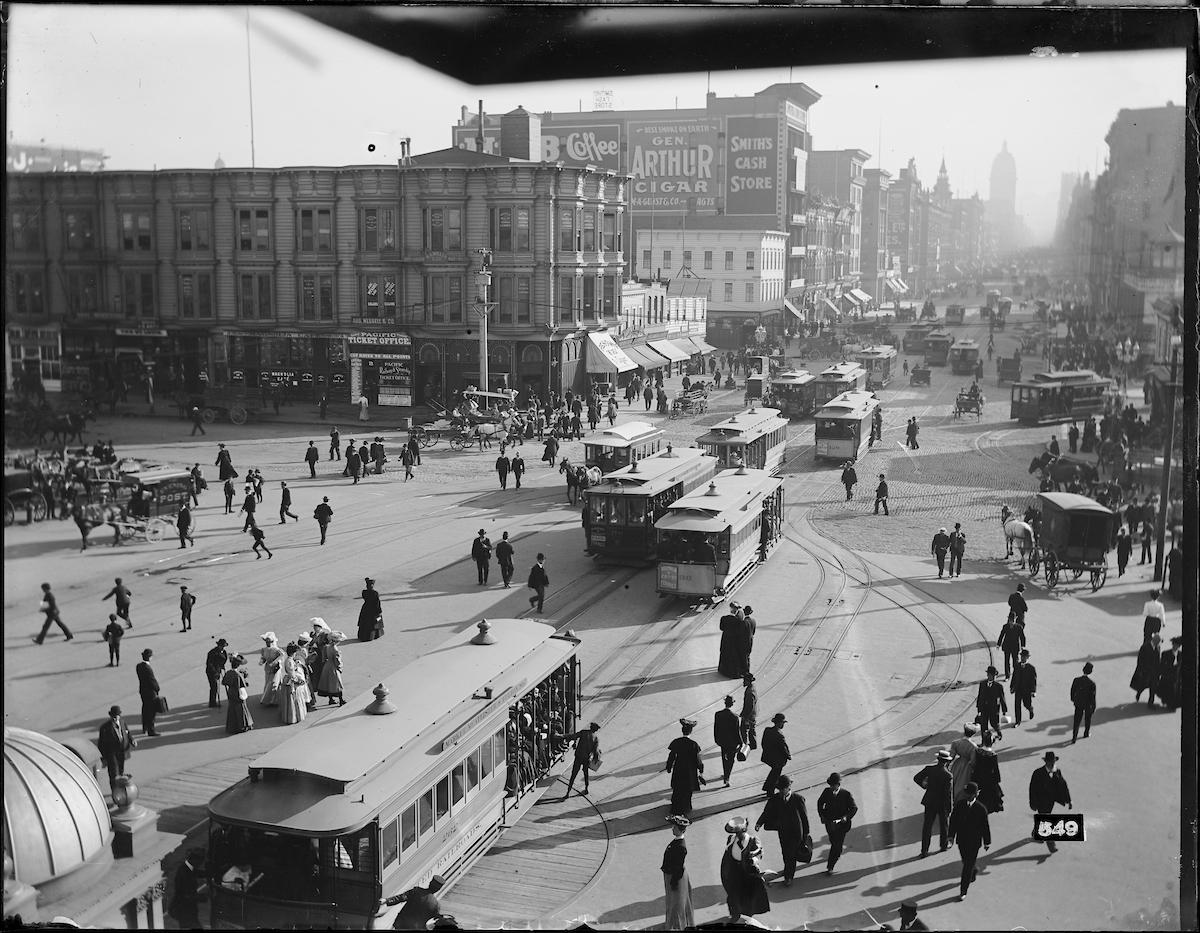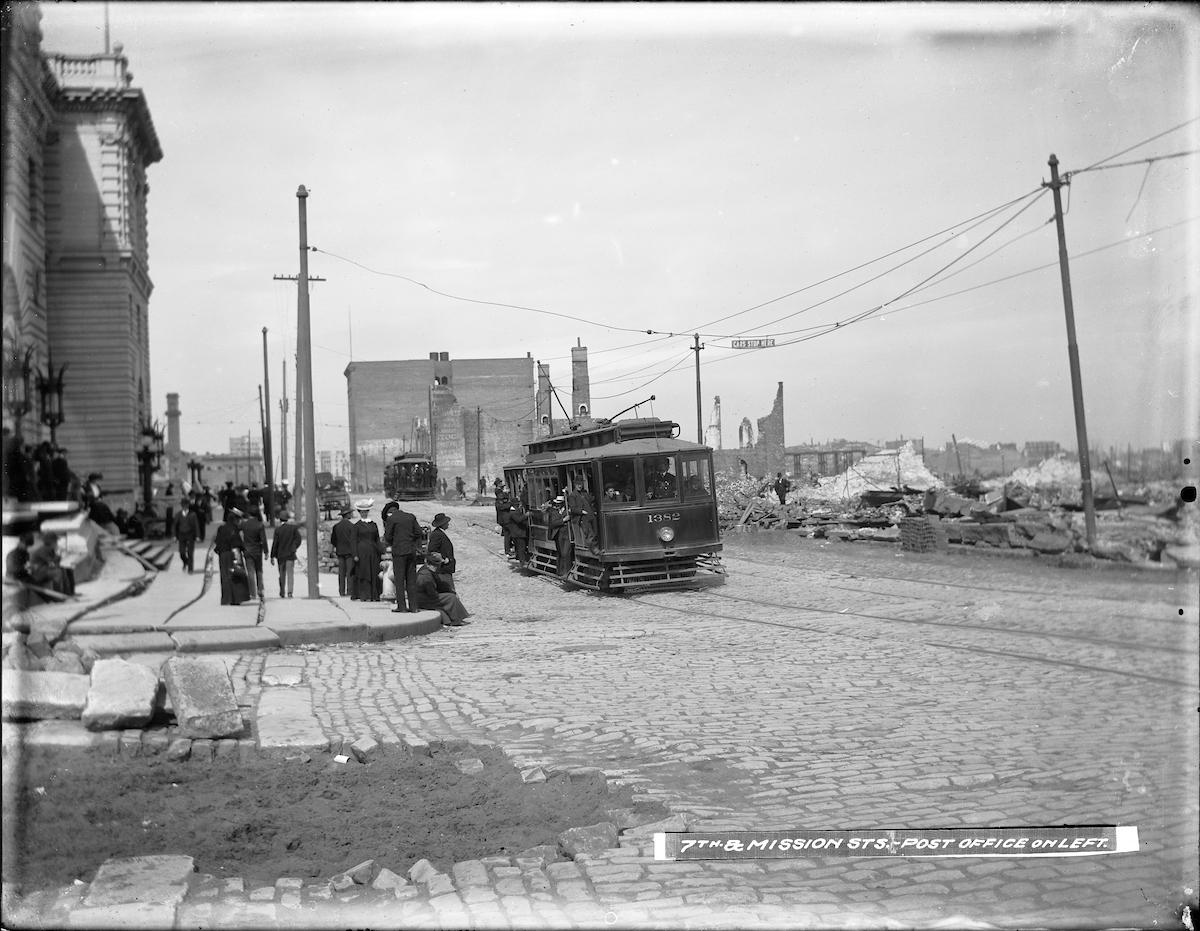April 18 marked the anniversary of the 1906 Earthquake and Fires. This disaster destroyed much of San Francisco and displaced over 50% of the residents. It also ushered in a new era of public transportation in the city.
Before the quake: Cable cars rule downtown
Before the earthquake, cable cars dominated transit in downtown San Francisco. Cable cars first started running in 1873. By the mid-1890s, cable car lines extended from the Ferry Building to Golden Gate Park. Cable cars are pulled along the street by an underground cable. This movement is possible thanks to a network of pulleys powered by heavy machinery from a centralized powerhouse.

This August 23, 1905 photo shows cable cars lined up outside the Ferry Building. At this time, it was one of the busiest transportation terminals in the world.
During the 1906 earthquake and ensuing fires, all the major cable car powerhouses were destroyed. Tracks and cables were knocked out of place and damaged. Most of the cable cars were completely burned. Rebuilding this system would take months.

The cable car powerhouse and barn lay in ruins along with nearly 25,000 other buildings following fires sparked by the April 18, 1906 earthquake.
After the quake: Electric streetcars seize the moment
During the 1890s, electric streetcars grew in popularity across the country. Electric cars were faster, carried more people, and were cheaper to build and operate. Many electric lines opened in San Francisco during this period. However, there was strong local opposition to the "unsightly" overhead power lines. As a result, electric lines were barred from major downtown corridors like Market, Geary and Sutter streets.
But the 1906 disaster brought a change of heart. Restoring transit service was a top priority for the recovery effort. At the time, automobiles and buses were almost non-existent. Most people traveled everywhere they needed to go by public transit. Bringing thousands of workers into downtown was the only way for the city to rebuild quickly.
The United Railroads Company (URR) was the city’s main transit operator. They seized the opportunity presented by the earthquake to convert to electric. By obtaining a temporary permit from City Hall, they were able to immediately start running wires on Market Street.

This May 9, 1906 photos shows a full electric streetcar passing the Post Office on Mission and 7th streets amidst warped streets and rubble.
By May 6, two weeks after the disaster, the first electric car ran down Market Street. Well into 1907, URR rebuilt nearly every cable line into an electric streetcar line. The only cable lines that remained were those on hills too steep for electric cars to climb.

Work takes place on Sutter Street in late 1906. This photos shows the utter devastation of the downtown core.
Conversion to electric service helped the city get back on its feet quickly after the quake. It also forever changed the nature of transit in downtown San Francisco. Slow moving, smaller cable and horse cars gave way to larger, faster electric cars. New electric lines also extended further out into the city. This increased development both downtown and on the outskirts of town.

This 1940 photo shows a busy morning on Market and Kearny streets.
By the 1930s, there were four electric streetcar tracks running down Market Street. Traffic funneled in from all across town, terminating at or near the foot of Market Street. Today, the 2, 5, 7 and 21 bus routes are all descendants of cable car lines converted after the earthquake.
Comments are for the English version of this page.